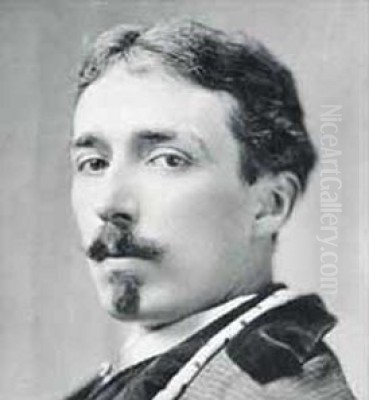
James Carroll Beckwith (1852-1917) stands as a significant figure in American art history, a painter celebrated during his lifetime for his sophisticated portraits, evocative landscapes, and genre scenes. Active during a transformative period in art, Beckwith navigated the currents between established academic traditions and the burgeoning influence of Impressionism. Trained in both the United States and Paris, he developed a style marked by technical proficiency and an increasingly modern sensibility, particularly in his handling of light and color. Beyond his own canvases, Beckwith was a highly influential educator, shaping a generation of American artists through his long tenure at the Art Students League of New York. His friendship and collaboration with contemporaries like John Singer Sargent further place him at the heart of the transatlantic art world of the late 19th and early 20th centuries.
Early Life and Formative Years
Born on September 23, 1852, in Hannibal, Missouri, James Carroll Beckwith came from a family of note; his father served as the United States Commissioner-General to the Paris Exposition of 1867. The family later moved to Chicago, where Beckwith received his early education. However, recurring health problems reportedly led to his withdrawal from formal schooling during his childhood. Despite this, his artistic inclinations emerged early.
In 1868, at the age of sixteen, Beckwith began his formal art training at the School of the Art Institute of Chicago, studying under Walter Shirlaw. His studies were interrupted by the Great Chicago Fire of 1871, a catastrophe that also reportedly led to the loss of his family's property. Following this upheaval, Beckwith relocated to New York City to continue his artistic pursuits. There, he enrolled in the National Academy of Design, further honing his skills within the established academic framework prevalent in American art institutions at the time. This foundational training in Chicago and New York provided him with the technical grounding that would underpin his entire career.
Parisian Transformation: Carolus-Duran and Sargent
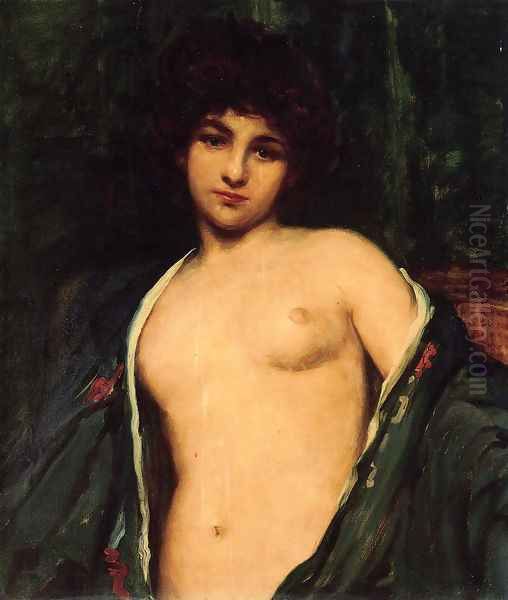
Seeking advanced training and exposure to the European art scene, Beckwith traveled to Paris in 1873. This move proved pivotal. He entered the prestigious atelier of Émile Auguste Carolus-Duran, a highly sought-after portraitist known for his bravura technique and modern approach, which, while rooted in realism, embraced painterly freedom. Studying under Carolus-Duran was a formative experience, refining Beckwith's technique and exposing him to a more cosmopolitan artistic milieu.
It was in Carolus-Duran's studio that Beckwith formed a close and lasting friendship with another talented expatriate painter, John Singer Sargent. The two young artists shared a stimulating environment, learning from their master and from the vibrant Parisian art world. Their camaraderie extended to professional collaboration; Beckwith assisted Sargent on mural projects, most notably contributing to decorations for the Luxembourg Palace (often associated with the Louvre complex in general accounts). This period immersed Beckwith in contemporary French art, including the revolutionary work of the Impressionists, whose approach to light and color began to subtly influence his own evolving style, even as he maintained the strong draftsmanship instilled by his academic training. His talent gained early recognition through acceptances into the Paris Salon and awards at international expositions held in the city.
Educator and Influencer in New York
In 1878, Beckwith returned to the United States, settling in New York City, which was rapidly becoming the nation's artistic hub. He quickly established himself not only as a practicing artist but also as a prominent educator. He accepted a professorship at the Art Students League of New York, an institution known for its progressive approach compared to the more conservative National Academy of Design. Beckwith taught classes in painting and drawing, including life drawing and anatomy, for nearly two decades, from 1878 to 1882 and again from 1886 to 1897.
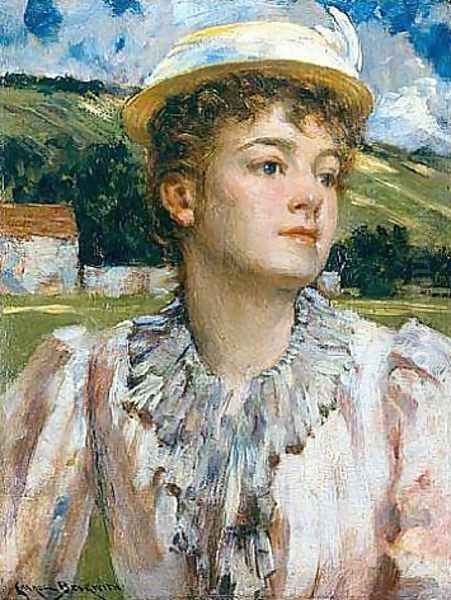
His teaching methodology reflected his own training, emphasizing rigorous draftsmanship, anatomical accuracy, and sound technique, echoing the principles of Carolus-Duran and his earlier teacher, Walter Shirlaw. Beckwith was known as a demanding but respected instructor. Among his many students were individuals who would go on to achieve significant recognition themselves, most notably William Merritt Chase, who became a leading figure in American Impressionism and a renowned teacher in his own right, and Irving R. Wiles, celebrated for his elegant portraiture. Beckwith's influence extended beyond the classroom; he was active in various arts organizations, serving as President of the National Free Art League, which advocated for the removal of tariffs on imported artworks, and participating actively in the Society of American Artists. His role as a juror and organizer for exhibitions further solidified his position within the New York art establishment.
Artistic Vision: Style and Subjects
James Carroll Beckwith's artistic style is best characterized as a sophisticated blend of academic realism and Impressionist sensibility. His rigorous training under Carolus-Duran and at the National Academy of Design provided him with a strong foundation in drawing and composition. This is evident in the structural solidity and accurate rendering found in many of his works, particularly his portraits. However, his time in Paris and his association with artists like Sargent exposed him to the Impressionists' fascination with light, color, and capturing fleeting moments.
Consequently, Beckwith's paintings often display a brighter palette, more visible brushwork, and a greater sensitivity to atmospheric effects than purely academic works of the period. He excelled in portraiture, capturing the likenesses and personalities of prominent figures and society women with elegance and insight. His female portraits, often depicting graceful subjects in fashionable attire or contemplative poses, are among his most admired works. Beyond portraits, Beckwith also painted landscapes, often imbued with a sense of light and air suggestive of plein air practice, as well as genre scenes and allegorical figures. His technical facility allowed him to move comfortably between these different subjects, always maintaining a high level of craftsmanship.
Signature Works and Public Commissions
Throughout his career, Beckwith produced numerous paintings that garnered critical acclaim and remain significant examples of American art from the period. Among his most recognized works is the Portrait of William Walton (1886), a compelling depiction that showcases his skill in capturing character. Another famous work is his Portrait of Evelyn Nesbitt (c. 1901), portraying the notorious model and actress whose life intersected with prominent figures of the era, including the architect Stanford White. Works like Nita further exemplify his sensitive portrayal of female subjects.

Beckwith also undertook significant public commissions. His early collaboration with Sargent on murals in Paris was followed by commissions in the United States. He contributed to the mural decorations for the Liberal Arts Building (sometimes referred to as the Manufactures and Liberal Arts Building) at the World's Columbian Exposition held in Chicago in 1893, a major showcase for American artists and architects. Sources also mention his involvement in creating artwork, possibly a mural or design, to support fundraising efforts for the pedestal of the Statue of Liberty in the 1880s. His success was marked by numerous awards, including medals won at the Paris Exposition (1889), the Atlanta Exposition (1895), and the Pan-American Exposition in Buffalo (1901), as well as the Charleston Exposition (1902).
A Network of Artists: Friends, Contemporaries, and Competitors
The art world Beckwith inhabited was a dynamic network of friendships, collaborations, and rivalries. His most significant artistic relationship was undoubtedly his lifelong friendship with John Singer Sargent, forged during their student days in Paris. They shared teachers, influences, and even collaborated on projects, maintaining a close bond despite careers that often kept them on different continents. His role as an educator connected him deeply with the next generation; students like William Merritt Chase and Irving R. Wiles became prominent colleagues, contributing to the diverse tapestry of American art.
Beckwith's circle also included figures like the architect Stanford White, a central personality in New York's cultural scene. Their paths crossed socially and professionally; interactions, sometimes complex, arose around shared circles and models like Evelyn Nesbitt, whom Beckwith painted and White knew intimately. As an established figure, Beckwith exhibited alongside and engaged with many leading artists of his time. He would have known fellow American Impressionists such as Childe Hassam, J. Alden Weir, and John Henry Twachtman, perhaps through organizations like the Society of American Artists or major exhibitions. His contemporaries also included Tonalists like Thomas Dewing and academic painters such as Kenyon Cox and Abbott Handerson Thayer, representing the varied artistic currents he navigated. His teacher Walter Shirlaw also remained an active figure during much of Beckwith's career. This web of relationships underscores his central position in the American art scene.
Champion of Tradition in a Modernizing World
While Beckwith embraced certain modern elements in his painting, particularly the brighter palette and looser brushwork associated with Impressionism, he remained fundamentally grounded in academic tradition. He held strong views on the importance of draftsmanship, technical skill, and established artistic principles. As radical new movements like Fauvism and Cubism began to emerge in Europe and find echoes in America during the later part of his career, Beckwith became increasingly critical of what he perceived as the excesses of modern art.
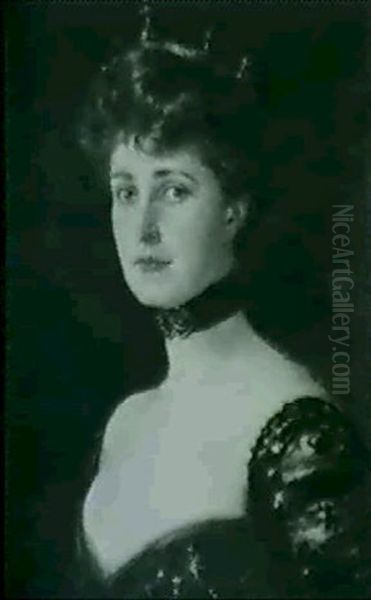
Sources indicate he viewed some avant-garde trends as lacking in skill, discipline, and connection to the enduring values of beauty and representation that he cherished. His personality was often described as rigorous and demanding, traits reflected in both his teaching and his artistic standards. In an era of rapid artistic change, Beckwith positioned himself as a defender of craftsmanship and tradition, even as his own work demonstrated an ability to adapt and incorporate contemporary influences gracefully. This conservative stance, while perhaps putting him at odds with the most radical innovators, solidified his reputation among patrons and institutions who valued technical mastery and aesthetic refinement.
Final Years and Enduring Legacy
James Carroll Beckwith remained an active figure in the New York art world for much of his later life, continuing to paint and exhibit. He maintained his connections to institutions like the National Academy of Design (elected full Academician in 1894) and the Art Students League, even after concluding his regular teaching duties. In his final years, he reportedly began working on his memoirs, seeking to document his experiences and perspectives on the art world he had known for decades. Unfortunately, these memoirs remained unfinished at the time of his death.
Beckwith passed away in New York City on October 24, 1917, at the age of 65. He left behind a significant body of work and a legacy as both a skilled painter and an influential educator. He is remembered as a key figure in American art during the Gilded Age, an artist who successfully bridged the gap between the academic training of the 19th century and the Impressionist-inspired modernism emerging at the turn of the 20th century. His paintings are held in the permanent collections of major American museums, including the Metropolitan Museum of Art in New York, the Art Institute of Chicago, the National Gallery of Art in Washington, D.C., the New-York Historical Society, the Parrish Art Museum in Water Mill, New York, the West Point Museum at the United States Military Academy, and the Cheekwood Estate & Gardens in Nashville, Tennessee, ensuring his contribution to American art history remains accessible.
Conclusion
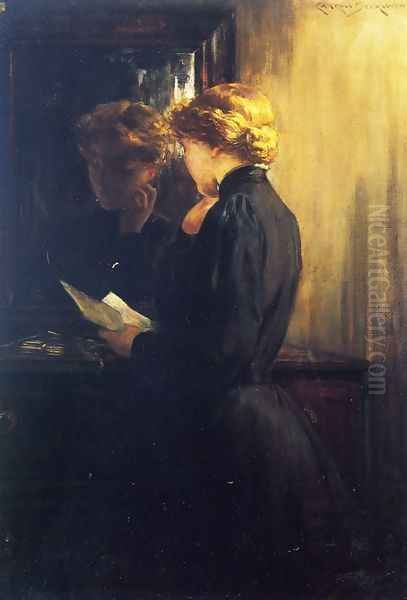
James Carroll Beckwith occupies an important place in the narrative of American art. As a painter, he achieved renown for his technical skill, particularly in portraiture, creating works that captured the elegance and character of his era. His style, evolving from academic roots to incorporate the light and color of Impressionism, reflects the artistic transitions of his time. As an educator at the Art Students League, he played a crucial role in shaping the skills and perspectives of numerous artists, including major figures like William Merritt Chase. Through his art, his teaching, and his active participation in the institutions of the art world, Beckwith made a lasting contribution, representing a vital link between tradition and modernity in late 19th and early 20th-century American painting.